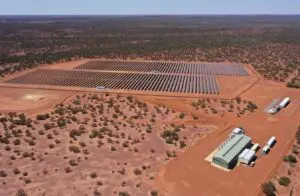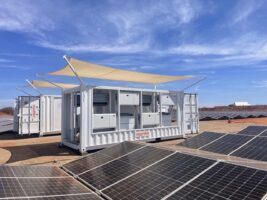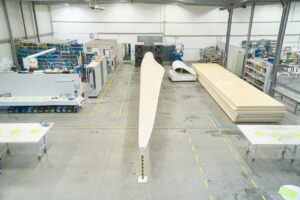South African gold mining giant Gold Fields is to spend $296 million on wind and solar power and transmission infrastructure at its St Ives gold mine in Western Australia, in a move it says will slash its current gas-fuelled power bill by two thirds.
Gold Fields, which has already added wind and solar to more than half of its mines around the world, including the ground-breaking Agnew gold mine in Western Australia (pictured above), says it will add 42MW of wind power and 35MW of solar to the St Ives mine, which is around 20kms from Kambalda.
The company says this combination will provide 73 per cent of the requirements of the mine and its processing plant, and and will reduce electricity costs to a third of the previously projected costs by 2025.
“Investing in renewables has obvious environmental benefits, but it also provides the business with cheaper electricity and offers an enhanced level of energy supply security,” said Mike Fraser, Gold Fields CEO.
When completed, the project will be the largest in the Gold Fields portfolio to date. Construction is expected to get underway in May, and will include a 33kV renewable energy hub substation and a 132kV transmission line. Full operations are expected by the end of 2025.
Six out of Gold Fields’ ten mines and projects are partly powered by renewable electricity, with plans already underway considering additional renewable energy projects to meet the company’s decarbonisation commitments.
These include the Agnew mine, which sources from than half its power from its wind , solar and battery. The company has installed a 12MW solar plant at the Gruyere mine, and is also planning a 11MW expansion to its existing 8MW solar plant at its Granny Smith mine, also in Western Australia.
The company’s Cerro Corona mine in Peru is classified as 100% renewables and is supplied fully by hydroelectricity.
Renewable electricity accounted for 17% of Gold Fields’ electricity consumption in 2023, up from 13% in 2022, resulting in a 5% decline in carbon emissions. The St Ives project will lift its total share of renewables in its electricity mix will increase to 24%.
“All our operations continue to investigate the possibility of adding further renewable electricity sources where it makes technical and economic sense to do so,” Fraser said.
“We are also exploring the most capital efficient ways to fund these projects as part of our disciplined capital allocation. Gold Fields is committed to playing its part in mitigating the impact climate change is having on the world.”










